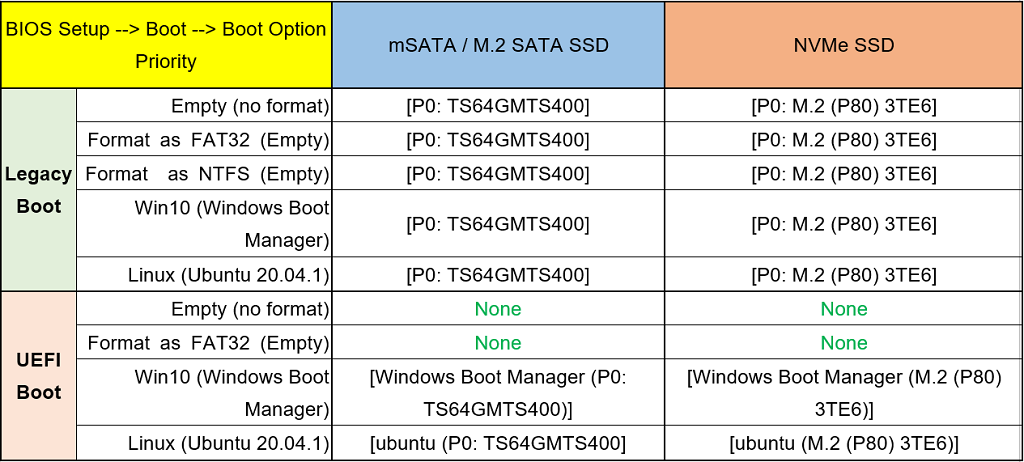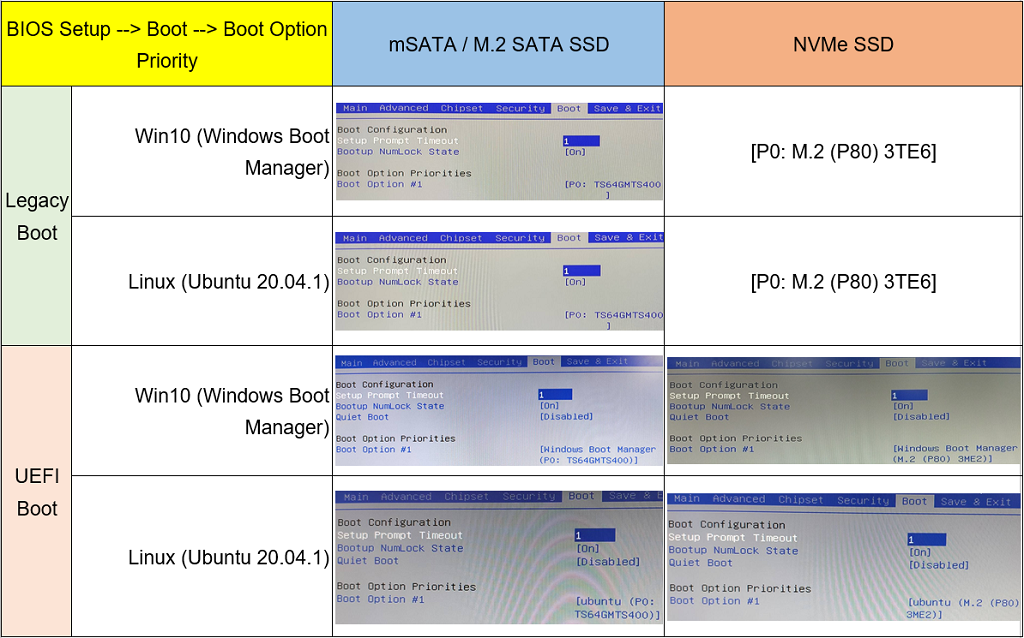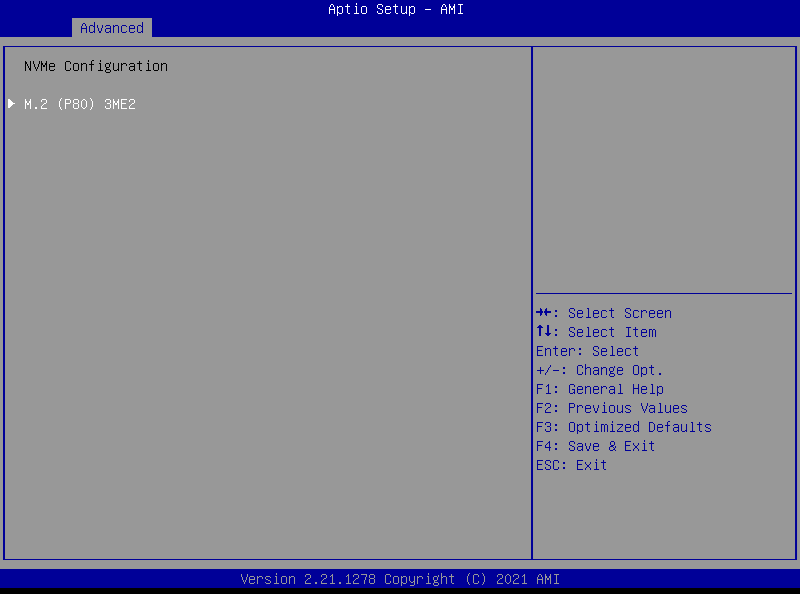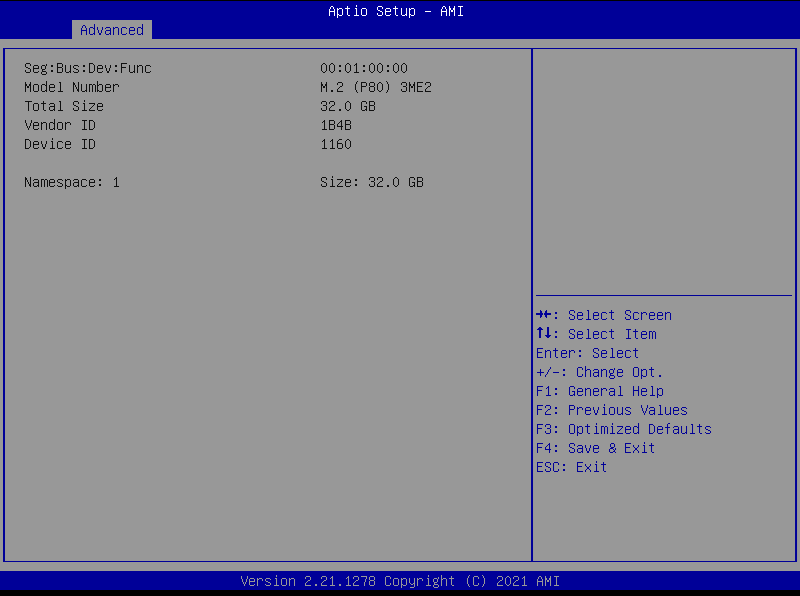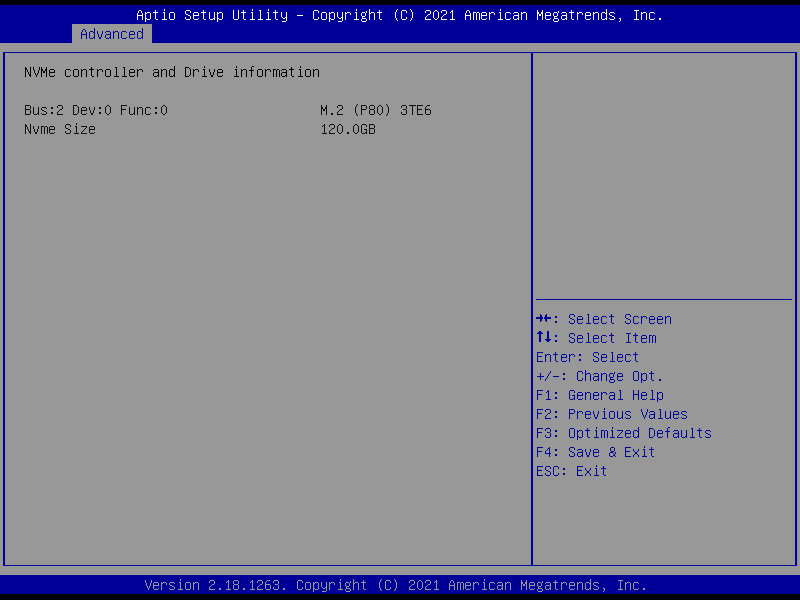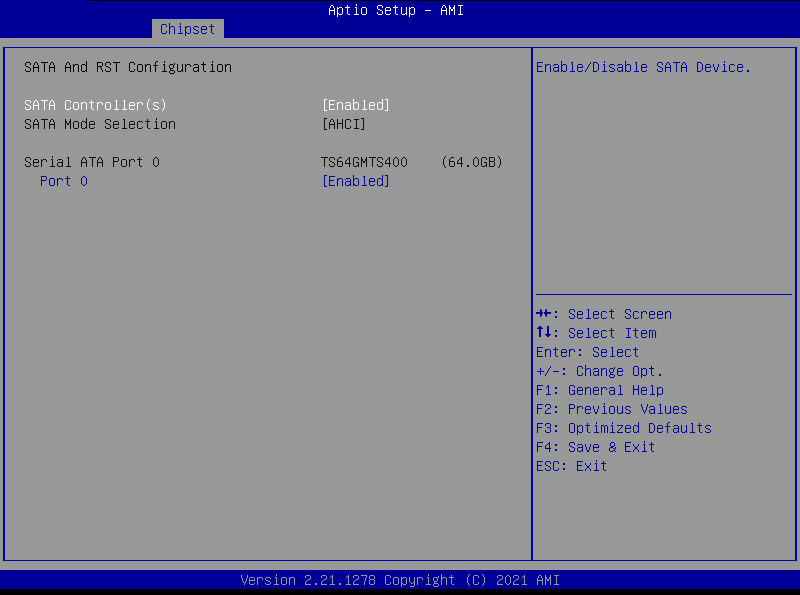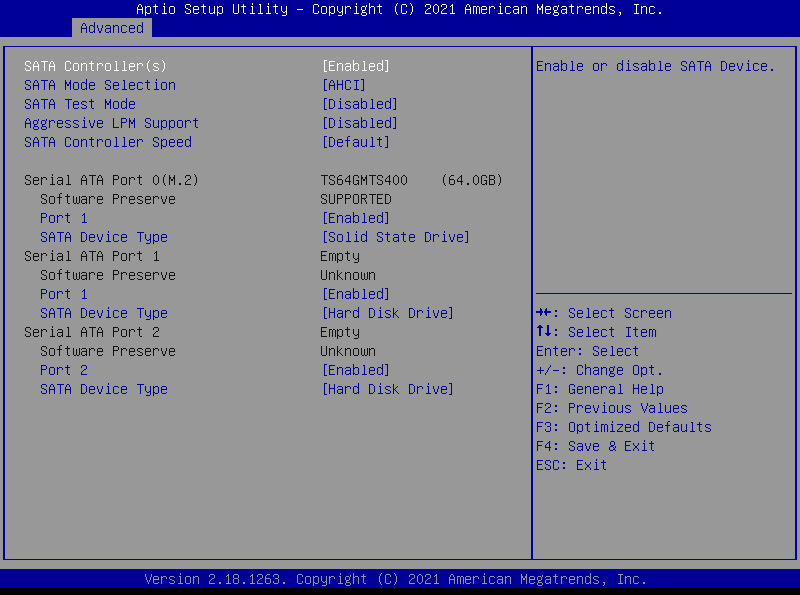MB1: EMX-SKLUP (BIOS version: XSKLU00X)
MB2: EMS-TGL-15-A1-1R (BIOS version: BTGLS00N)
M.2 SATA SSD: Transcend TS64GMTS400 64GB M.2 2240, ACC-M2-42-64G-02R
NVMe SSD1: Innodisk 3TE6 128GB NVMe M.2 2280 PCIe (Key B+M)
NVMe SSD2: Innodisk 3ME2 32GB NVMe M.2 2280 PCIe, ACC-M2-80-32G-01R (Key B+M)
2023090603

